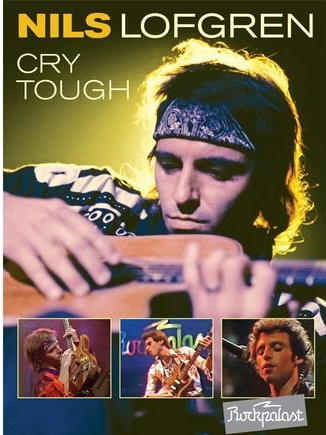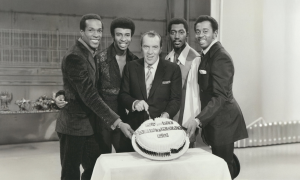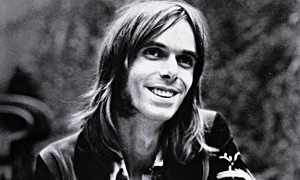Home » Jazz Articles » Film Review » Nils Lofgren: Cry Tough
Nils Lofgren: Cry Tough

Nils Lofgren
Cry Tough
Eagle Rock
2010
It's no small irony that guitarist and vocalist Nils Lofgren has been a member of Bruce Springsteen's E Street Band for over 25 years. There was a time in the mid 1970s when both men seemed to hold the future of rock and roll in their hands along with their guitars. For both the longtime fans of Lofgren and the uninitiated, Cry Tough demonstrates why.
This 2-DVD set includes performances from Europe's Rockpalast television series in 1976, 1979 and 1991 and illustrates the evolution of Lofgren's solo career. At the time of the recording in support of his eponymous first solo album, the native of Falls Church, VA had disbanded Grin, the group that he had fronted for some years. It was clear early on that Lofgren was more a stylist than an innovator, but the panache he brought to his songs and performance wasn't relegated to the colorful garb that draped his diminutive figure (and his guitar). On the contrary, his vitality and attitude suggested he was capable of redefining the role of rock role model on the order of the Rolling Stone Keith Richards, the subject of Lofgren's most famous original, "Keith Don't Go."
Backed by a four piece group including brother Tom on guitar and keyboards, Lofgren loved to stretch out with his songs; and if he and his band didn't truly push the boundaries of improvisation, it's nevertheless a pleasure to hear them dig into a riff-derived groove behind the frontman who took a gritty approach to soloing, as demonstrated on "It's Not a Crime."
Lofgren may have reached the pinnacle of his powers three years later when he returned to appear on a German-based television series. The breadth of his vision clearly didn't extend far at all beyond the early lexicon of rock and roll—girls, cars and the iconography of the music itself—so that while his musicianship remained at a high level (none of the quintet resorted to faux theatrics to augment their playing), his self-composed songs begin to sound repetitious. Perhaps that explains the appearance of more older tunes like "Beggars's Day"—first contributed to Crazy Horse's 1971 Warner Bros. debut— and two numbers from the Grin repertoire, "Soft Fun" and "Moon Tears."
The latter also appears on the 1991 segment, which comprises an entire disc in the set. Grin's "See What A Love Can Do" appears late in this set following a clutch of the best of Lofgren's latter day tunes. "Across the Tracks" and "Silver Lining;" both sound as natural as his best material, while "Delivery Night' and "Bein' Angry" seem forced in both composition and delivery.
The audio and video clarity of these recordings remain consistent throughout even as the diversity of the performance becomes static. It's a thing of the past to watch Lofgren casually but expertly circle his way into Carole King's "Goin' Back" as he does 15 years prior, but perhaps that's more telling than it first seems: the combination of boyish braggadocio and vulnerability of the earliest show (both of which qualities arose most directly from Lofgren's voice) first morphed into street tough attitude, then to a more self-conscious persona.
By 1991, Lofgren was no less skilled but, with his peacock appearance toned down yet still including a headband and dark glasses, he couldn't avoid a debt to Springsteen circa 1984. Despite yet another shuffle of his band lineup (the 1979 group was more skilled not to mention versatile) and a more polished stage presentation, Lofgren proves he's learned something about unpredictability from Neil Young: he opens the set with a set of numbers accompanying himself on acoustic guitar.
"Keith Don't Go" morphs from a haunting piece to a somewhat heavy- handed rendition weighed down with synthesizers that undermine the presence of drummer Johnny "Bee" Badanjek, formerly of Mitch Ryder's band (and, to a lesser extent, Neil Young's guitar tech, Larry Cragg on guitar and keyboards). In contrast to his defiant reading from 1979, Lofgren sounds disengaged from material like "Rock and Roll Crook" and unfortunately doesn't have newer songs of equal or higher caliber: "Sticks and Stones" doesn't transcend the cliché of its title.
The set list progresses fitfully though such selections and reaches its high points with, not surprisingly, older material. "Moon Tears" and "Back It Up" rock with a vengeance Lofgren and company otherwise reach for, and don't quite attain, through much of this approximately 90 minutes. They attain redemption, however, during the encore as Lofgren and Badanjek ignite fireworks in the later intervals of "I Came To Dance."
Thriving to the extent he did before the arrival of arena rock, disco and punk, Nils Lofgren nevertheless didn't possess the ambition to make himself a superstar, perhaps because his natural inclination was to give precedence to music, then to his own stature. That attitude led to multiple collaborations with Neil Young as well as his long-standing tenure beside Springsteen, which, combined with his solo career, renders him a duly notable chapter in the history of contemporary rock. With little content like this available in the marketplace, Cry Tough becomes all the more valuable.
Tracks: CD1 (1991): Sticks and Stones; Keith Don't Go; Rock 'n' Roll Crook; Cry Tough; Trouble's Back; Delivery Night; Bein' Angry; Moon Tears; Girl in Motion; Valentine; Sun Hasn't Set; Across the Tracks; Silver Lining; Walkin' Nerve; Gun and Run; No Mercy; Back it Up; Shine Silently; See What a Love Can Do; I Came to Dance. CD2 (1976): Cry Tough; It's Not a Crime; Keith Don't Go; Going Back; Share a Little; Jailbait; Like Rain; Rock 'n' Roll Crook; Back it Up. (1979): Keith Don't Go; A Fool Like Me; Beggar's Day; No Mercy; It's Not a Crime; Like Rain; Heart on Fire; Cry Tough; Going Back; You're So Easy; I Came to Dance; Incidentally...it's Over; Back it Up; Moon Tears; Soft Fun.
Personnel: (1976): Nils Lofgren: vocals, guitar, piano; Tom Lofgren: guitar, keyboards, vocals; Bobby Manriquez: guitar, vocals; Scott Ball: bass, vocals; Mike Zack: drums, vocals. (1979): Nils Lofgren: vocals, guitar, piano; Tom Lofgren: guitar, vocals; Tommy Thomas: keyboards, vocals; Wornell Jones: bass, vocals; Mike Zack: drums, vocals. (1991): Nils Lofgren: vocals, guitar, piano; Tom Lofgren: guitar, keyboards, vocals; Larry Cragg: guitar, keyboards, vocals; Ronnie Newmyer: bass, vocals; Johnny 'Bee' Badanjek: drums.
Tags
PREVIOUS / NEXT
Support All About Jazz
 All About Jazz has been a pillar of jazz since 1995, championing it as an art form and, more importantly, supporting the musicians who make it. Our enduring commitment has made "AAJ" one of the most culturally important websites of its kind, read by hundreds of thousands of fans, musicians and industry figures every month.
All About Jazz has been a pillar of jazz since 1995, championing it as an art form and, more importantly, supporting the musicians who make it. Our enduring commitment has made "AAJ" one of the most culturally important websites of its kind, read by hundreds of thousands of fans, musicians and industry figures every month.


























